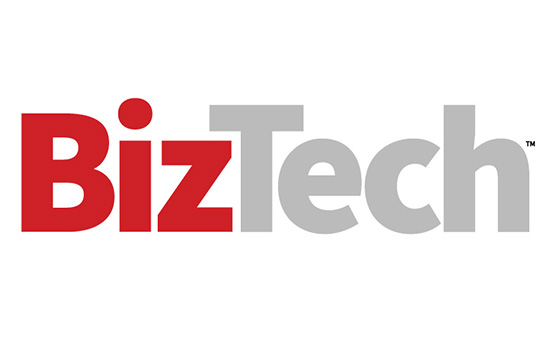Conversations about the implementation and deployment of artificial intelligence in the workplace have evolved rapidly in recent years. The focus has leapt in a short time from simple chatbots to generative AI and now to conversational and agentic AI. And while use cases have morphed, the need for human involvement has remained constant.
In recent research conducted by CDW, 80% of respondents indicated that AI-enhanced collaboration is the workplace trend they are most excited about. The second most exciting trend to respondents was agentic AI tools that act on behalf of users.
At Cisco WebexOne in San Diego, Cisco President and Chief Product Officer Jeetu Patel acknowledged the rapid rate of change taking place as organizations continue to adopt AI use cases. “We are now squarely in the second phase of AI, where agents are going to conduct tasks and jobs almost fully autonomously, on behalf of humans, in service of humans,” Patel stated during the event’s opening keynote. “And this augmentation of capacity, where you'll have maybe 10 agents for every human, maybe you'll have 100 agents for every human, maybe you'll have 1,000 agents over time for every human, is going to make our world of 8 billion people feel like we've got a throughput capacity of 80 billion people, maybe 800 billion people.”
Patel predicted that the rise of agentic AI will have “a profound set of implications on the technology architectures and the infrastructure that's actually going to power this kind of platform shift that's happening with AI.”
Click the banner to learn how organizations are optimizing the digital experience in the workplace.
AI Success Hinges on Trust
Patel identified a few key constraints that could potentially inhibit the adoption of AI, and one of those was what he called a trust deficit.
“If people don't trust these systems, they're not going to be able to use them,” he said. Over the course of history, without trust, “you always made a choice between, do you want to be safe and secure, or do you want to be productive? It was one or the other. This is the first time that you're starting to see that, if you actually don't create a level of comfort for safety and security, people just won't use these systems. So, the trust deficit is a pretty big deal that every enterprise is going to be worrying about.”
In a related session at the event, David Gordon, go-to-market leader for generative AI and cloud-based services partner at AWS, followed up on Patel’s discussion of a persistent trust deficit with AI. “We think it's composed of these elements in this deficit of trust. The first is a lack of context — if the AI system doesn't know enough about your company, your data, your operations, then when you ask a question, you're not going to get an answer that's terribly relevant to what you're trying to do.”
Gordon identified security as the second element contributing to the trust deficit. “If the AI assistant doesn't know who I am at a company, what information I should get access to, what information I should not get access to, you're introducing some risk.” And when talking about data, privacy and compliance, how can an organization ensure that the data it’s using won’t subsequently be used to train a large language model somewhere to help somebody else's business? “You need to make sure that it stays in context, trust, secure and compliant. So, it's that background that we at AWS have taken this journey into GenAI, and we have over 200 different AI services all focused on that foundational element of how we make sure we do this with trust and security and context.”
Collaboration Between Human and AI Agents in the Customer Experience
In another session at Cisco WebexOne, experts from CDW presented a session titled “Blending AI and Human Agents for Frictionless CX.”
“One of the questions that we get a lot is, is AI going to replace the human agent? And in our opinion, the evolution of CX AI is not about replacing the human agent, it's about elevating the human agent, making sure that we're using the power of AI to empower them to create world-class customer experiences,” said Ken Drazin, director of digital experience at CDW.
Drazin noted that AI is great at handling routine tasks with precision. It’s also useful for data analytics, specifically in a customer contact center to help with personalization and to deliver real-time support. In addition, AI and analytics can provide insights into how companies can continue to evolve and improve the customer experience for their customers.
“Having said that, humans are still irreplaceable,” he said. “We see them as being the orchestrators and supervisors of AI in the future. We still need humans to connect with empathy and provide that emotional connection when it requires it in the customer interaction. There are always going to be escalations, there are always going to be edge cases. There are going to be things that AI is not able to handle.”
Since human and AI agents excel at different tasks, the combination of the two presents great future potential. Drazin identified three integration points where AI and human agents can work together to elevate the customer experience:
- Real-time handoff: “Making sure that we're providing that context — whether we're having an AI bot interact with a human or a human interact with AI — making sure that we're providing context of what the previous interaction data was, so that we can make sure we're having a seamless transaction and a seamless transfer, and providing that best-in-class customer experience.”
- Agent-assist interfaces: “Using AI to support and empower the new human agent — things like providing them with real-time data when they need it at the at the tip of their fingers, not having to look through a knowledge base, and really empowering them to do their job, take care of the customer and provide that emotional and empathetic connection that they need to provide.”
- Using AI and humans for a continuous feedback loop: “How can we make our customer experience better? How can we make our AI better, getting the human insight from all the oversight that they have done to provide a better experience? And then using AI for analytics for things like coaching agents in the situations where maybe they're not being as empathetic as they need or using AI to escalate a case to a supervisor when AI is sensing frustration from a customer.”
With these examples, Drazin predicted that the future of humans in the contact center is going to be the supervisory role instead of handling those routine calls, “to really be in that orchestration layer over AI, providing that strategic insight and that oversight to make sure it's doing what we developed it to do.”
DIVE DEEPER: Find out how to reduce friction in the customer experience.












